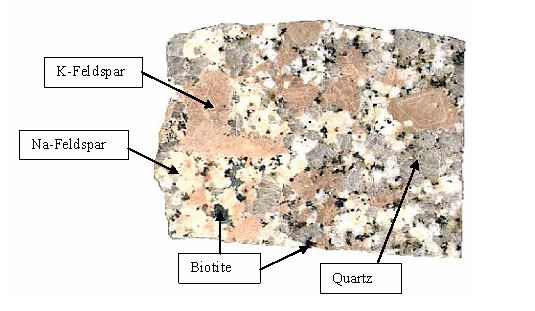2/3 of Ohio was glaciated by a sheet of ice that was estimated to have grown more than 1 mile thick. This occurred during the Pleistocene Epoch. The ice age was composed of multiple ice ages actually. The Wisconsinan stage began 110,000 years ago, entered into Ohio 24,000 years ago, and had left the state 10,000 years later. Valleys were gouged out by ice, meltwaters deposited till, and large boulders were left behind. And the latter is what brings us to Tawawa Park for this lesson.
The "Big Rock" in Tawawa Park is not native to Ohio. Most of the stones in Ohio are limestone, shale, dolomite, and sandstone. They are all sedimentary rocks. But the rock you are standing next to now is igneous. The giant granite boulder is nonnative. The glacial ice transported this rock south and west into Ohio. And even though the ice brought it here 24,000 years ago, the rock itself was formed prior to that.

So how did it get here? "Big Rock" was carried by ice and deposited here when the glacial meltwater beneath the glacier penetrated bedrock fractures, froze, expanded, and broke off fragments of rock that were inside the frozen mass. When the glacier reached its southern advancement and started to melt, the remnants it carried were left behind.
So what type of rock is it? Unlike the sedimentary rocks that you will find in Ohio, this rock is actually igneous. When you take a look at the boulder you will see crystals in the white granite. You will also see how the lighter quartz and feldspar minerals are offset by flecks of the darker hornblende and biotite.

Data suggest that granite, exposed in a variety of tectonic and non-glacial climatic settings, erodes quite slowly -- on the order of a meter to perhaps a few tens of meters in a million years.
To get credit for this earthcache, send me the answers to these questions:
1. Explain in your own words how this rock got here.
2. Measure the height, width, and depth of the rock in feet.
3. Describe the look of the granite. Using the photo above, do you see more feldspar, quartz, or biotite in this granite rock?
4. On top of the boulder is a carving from 1876. Do you notice any erosion on it? Can you still read it?
5. At the reference point, you will see native rocks in the water. Compare those Ohio rocks to the Canadian boulder. You will also find local rocks in the small creek near the Big Rock.
6. Post a picture of yourself (face not required) or a personal item at the "Big Rock"
Source: Ohio Rocks
